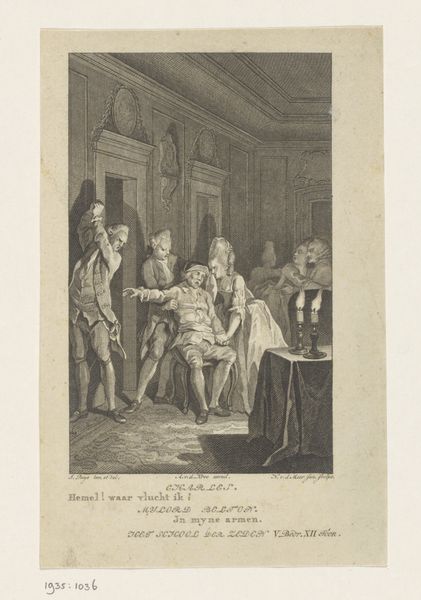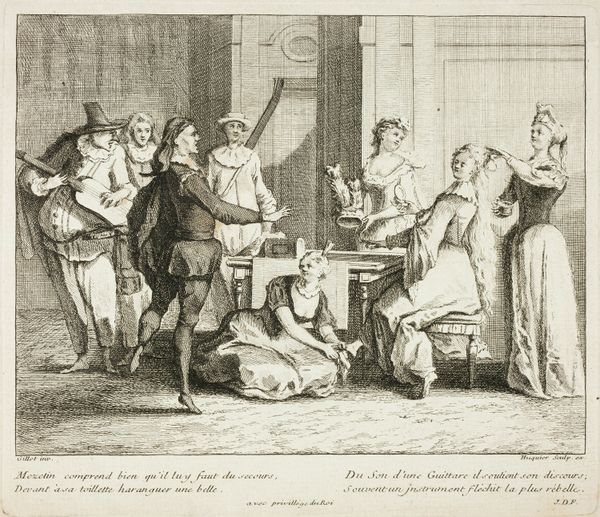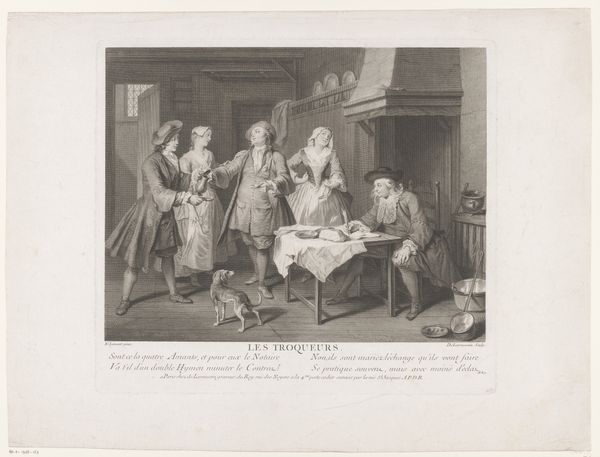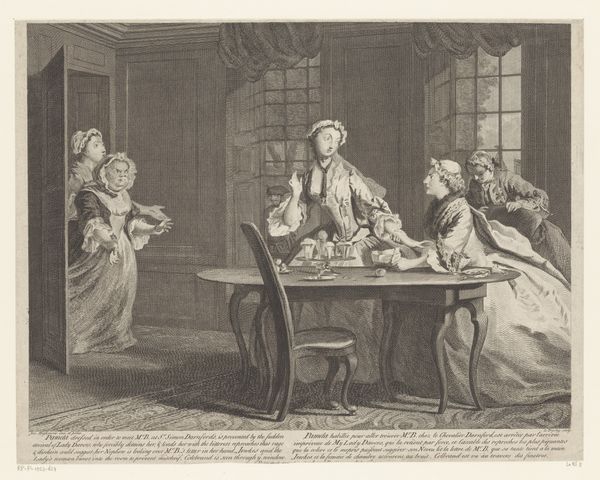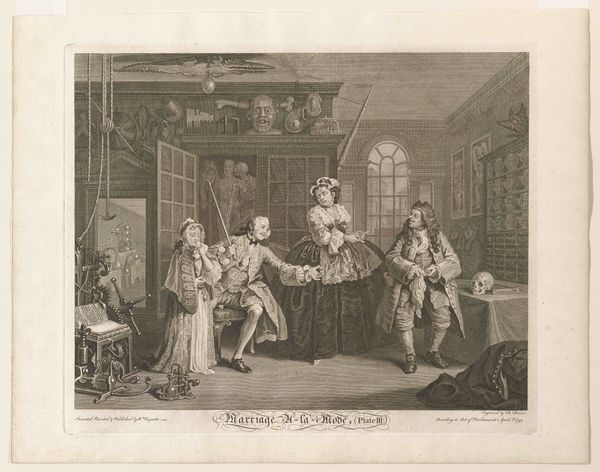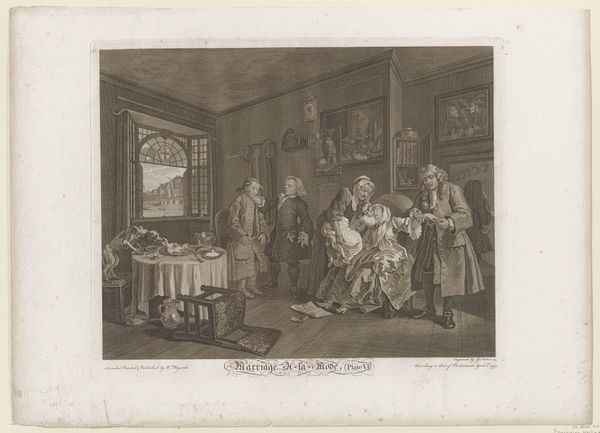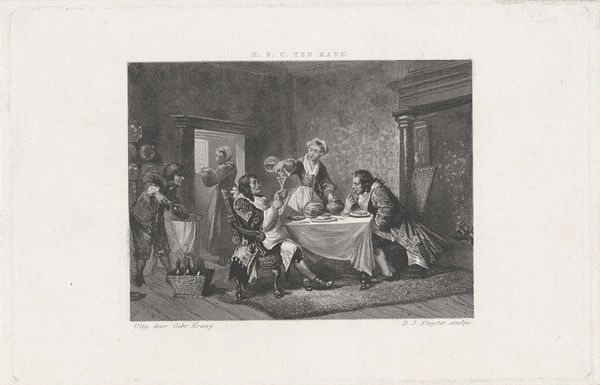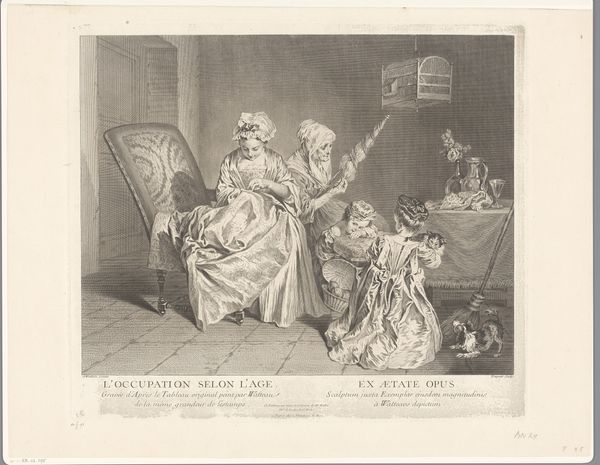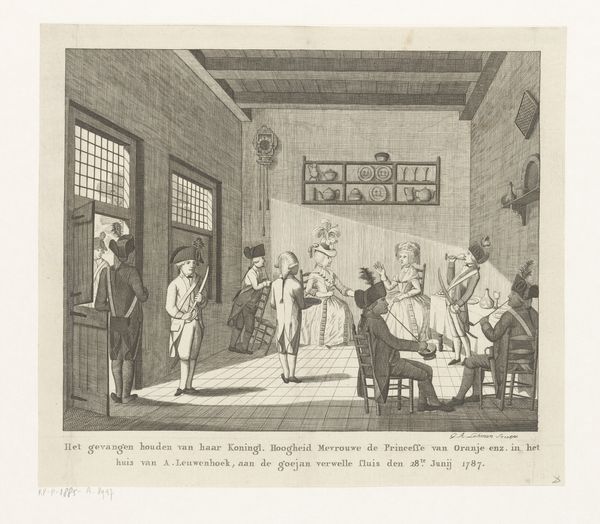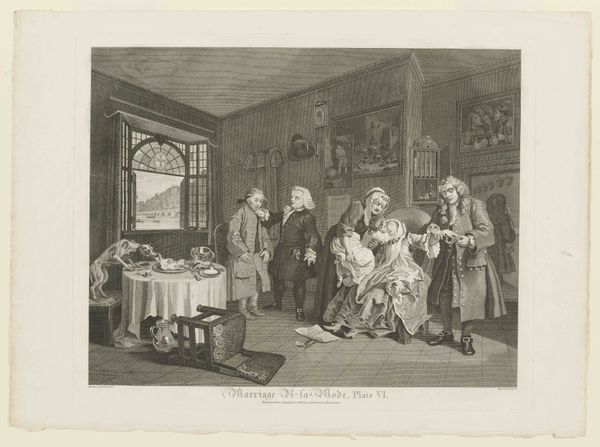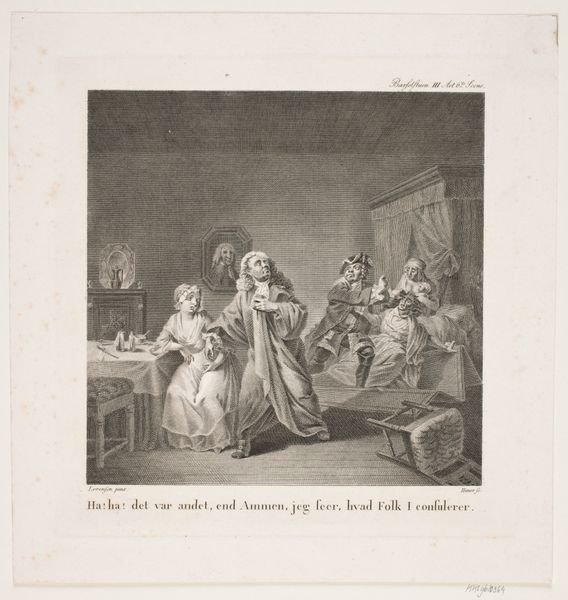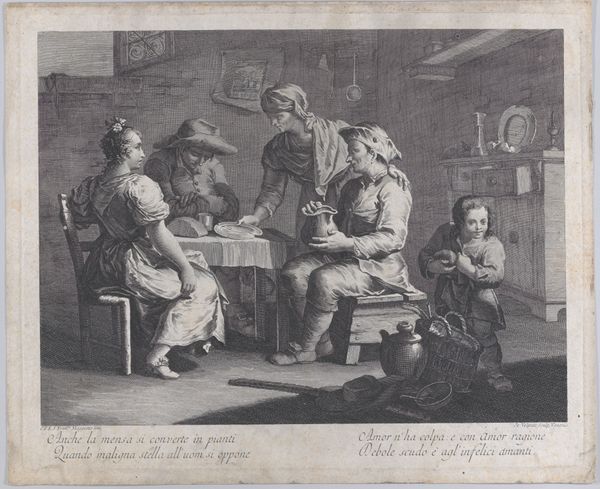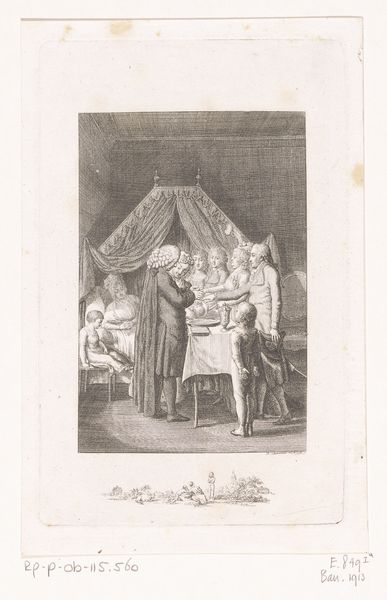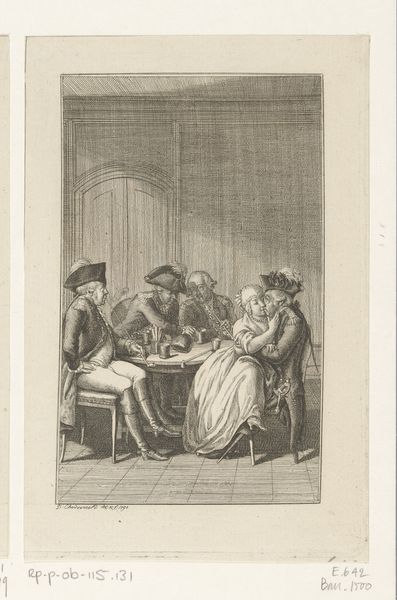
drawing, print, engraving
#
drawing
# print
#
15_18th-century
#
men
#
genre-painting
#
history-painting
#
engraving
Dimensions: sheet: 11 13/16 x 14 9/16 in. (30 x 37 cm)
Copyright: Public Domain
Curator: Looking at this engraving, "Debates on Palmistry," dating from 1782, currently residing at the Metropolitan Museum of Art, my immediate thought is how stark the rendering is. There's a coldness, an almost clinical feel to the composition. Editor: Clinical is interesting; I perceive something much more theatrical at play, an intense staging of class, gender, and labor roles. Curator: Yes, staging is a key term here. Considering Haynes, the artist here is a copyist translating from a Hogarth oil sketch, this printed medium provides accessible dissemination of subject and concept. The original image becomes reproduced and enters a wider market—which shifts the piece into a commodity circulating and reaching new audiences with ease. Editor: Precisely. Let's unpack some of this staging. Notice how the composition literally divides the space. On the right, a coterie of men—assuredly upper class, judging by the powdered wigs and idle debate—gather around a table for palm reading. Contrast that with the solitary woman to the left, broom in hand, sweeping in servitude with her sole company an owl which we read as her intellect and social companion in wisdom. Her material reality starkly contrasts their theoretical parlor game. Curator: Exactly! The details surrounding material value come to life here. One may even interpret the seated owl alongside the maid as her reading tool -- her skill! The men debate palmistry while she lives the practical application. And that begs to ask, is there skill in knowledge, craft in the tool? Is she debating too as an observer? Editor: That tension is powerful. Who has access to esoteric knowledge? Who benefits from its perceived authority? And whose labor sustains the space for such debates to occur? Look at the Black figure standing guard—a further level to the existing socio-economic dynamic within this space and performance. Curator: It is quite the detailed construction of social hierarchies rendered into print; and available at varying socio-economic levels through print. By its very nature as a printed and distributed work it becomes both critique and an item to fuel further social standing for its buyer. Editor: Indeed, and I think understanding art in the 18th century often meant participating in—and perhaps also inadvertently perpetuating—these very social divisions. In that sense, this work, rendered as a reproducible print, can expose the material networks and power structures of that era so clearly to our modern view. Curator: Well said, providing both historical document and material evidence of societal structure at once. A successful study! Editor: A complex entanglement that yields endless insight and interpretation.
Comments
No comments
Be the first to comment and join the conversation on the ultimate creative platform.
